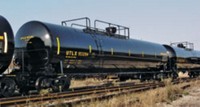Advertisement
Grab your lab coat. Let's get started
Welcome!
Welcome!
Create an account below to get 6 C&EN articles per month, receive newsletters and more - all free.
It seems this is your first time logging in online. Please enter the following information to continue.
As an ACS member you automatically get access to this site. All we need is few more details to create your reading experience.
Not you? Sign in with a different account.
Not you? Sign in with a different account.
ERROR 1
ERROR 1
ERROR 2
ERROR 2
ERROR 2
ERROR 2
ERROR 2
Password and Confirm password must match.
If you have an ACS member number, please enter it here so we can link this account to your membership. (optional)
ERROR 2
ACS values your privacy. By submitting your information, you are gaining access to C&EN and subscribing to our weekly newsletter. We use the information you provide to make your reading experience better, and we will never sell your data to third party members.
Safety
Safer Shipping
Industry supports rule to boost safety standards of rail hazmat tank cars
by Glenn Hess
January 19, 2009
| A version of this story appeared in
Volume 87, Issue 3

THE DEPARTMENT of Transportation has issued a final rule that requires railroad tank cars used to transport highly hazardous chemicals to meet new safety standards designed to prevent leaks in the event of a crash. The chemical industry strongly supports the new rule.
"Strengthening rail hazmat tank cars will reduce the risk of spills and increase public safety should a train accident occur," Transportation Secretary Mary E. Peters says.
"Chemical companies own or lease the tank cars in which they ship these critical materials," says Calvin M. Dooley, president of the American Chemistry Council, which represents 134 major chemical manufacturers. "The willingness of our members to support new investments in safety is a hallmark of their commitment to continuous safety and performance improvement."
The new standards, which apply to tank cars built on or after March 16, 2009, seek to guard against the release of poisonous materials such as chlorine and anhydrous ammonia. Such chemicals have been involved in three fatal derailments since 2002.
Under the rule, tank cars carrying these substances will be required to have better puncture resistance through a combination of thicker inner shells and outer jackets, depending on the specific chemical being transported. The rule also requires each end of the car to be protected with a full head shield as well as stronger valves and nozzles.
In addition, the rule imposes a 50-mph maximum speed limit on trains hauling the most dangerous hazardous chemicals and allows for an increase in the gross weight of the tank car to accommodate the enhanced safety measures.
"Shipping these critical materials by rail is one of the safest modes of transportation, and this new rule will make it even safer," says Arthur Dungan, president of the Chlorine Institute, an industry group.
About 15,000 tank cars carry extremely toxic chemicals, according to the Association of American Railroads, a freight-rail organization. Approximately 100,000 carloads of those materials are transported each year.
The cost of replacing the tank cars, which will largely fall on the chemical industry, is estimated at $153 million over 30 years, according to the Federal Railroad Administration.




Join the conversation
Contact the reporter
Submit a Letter to the Editor for publication
Engage with us on Twitter